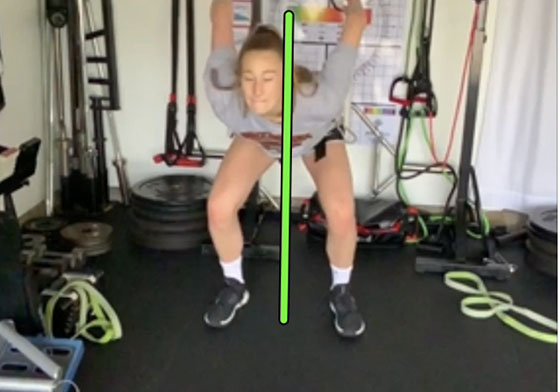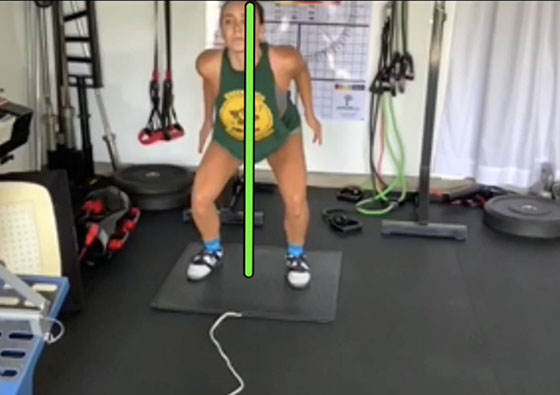Foundational Speed Patterns That Make Up Basketball
- Lee Taft, "The Speed Guy"
I love conversations about which sport has the best athletes. To be quite honest, an argument can be made for many sports having the best athletes. But again, there’s a difference between a sport having great athletes and the sport requiring the most athleticism to play it.
I’m not going to say basketball is the most athletically challenging, but it requires incredible athleticism to play it.
Follow along as I break down the basketball speed patterns that define athleticism in basketball. If a player lacks in any area, it’s a good chance they will be less successful.
Let’s kick off with the most general and most trained pattern in basketball- Linear Acceleration. Linear acceleration is how a wing quickly moves up the floor on a fast break. It’s how the point guard blows by a defender. It’s what makes centers tough to guard in transition.
ACCELERATION
Acceleration is defined as an increase in the rate of speed. When a player is stationary and needs to escape or attack a new area fast, their ability to accelerate quickly will often define their success in basketball.
Acceleration is characterized by the legs driving down and back into the basketball court, while the arm drive is typically longer and more aggressive. Both of these characteristics are that the body has to go from zero momentum to gaining speed instantly. Each step requires great effort down and back into the court until a play is made.
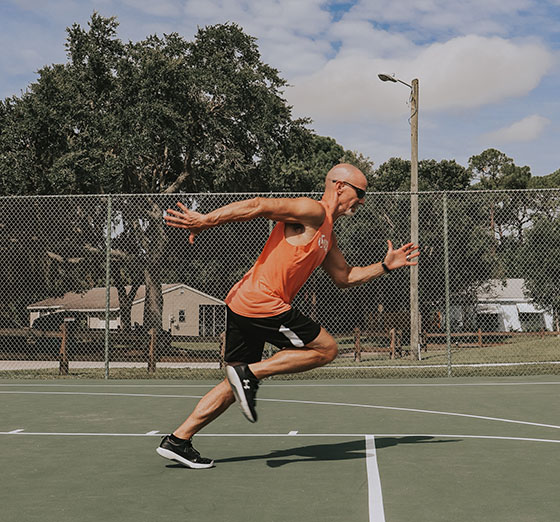
LATERAL SHUFFLE
The next most common movement pattern in basketball is the lateral shuffle, most seen from a defender guarding the ball.
The lateral shuffle has a very distinct gait cycle. Unlike sprinting, the lateral gait cycle is performed with each leg staying on the same side of the body during the entire movement. The sprint exchanges each leg going from the front side to the backside in a cyclical pattern.
The lateral gait cycle is characterized by a backside leg push to get the body moving in the direction of travel, while the frontside leg performs a pulling action to keep the momentum gained by the back leg moving. This pattern is completed in a sequence known as a Push, Pull, Recover, Repeat.
The back leg is the engine that drives the athlete's lateral shuffle. Once the back leg pushes and momentum is gained, the front side leg will reach out laterally and pull the body as the backside leg is finished and in the recovery phase. As the front leg finishes the pull, it will meet with the backside leg under the hips, known as the recovery.
The lateral shuffle is one of those patterns that isn’t the fastest, but it gives the most options to change directions laterally and stay close to an opponent. Once the players feel the opponent's speed is getting too fast for them to stay in the shuffle, they will move into a faster lateral gait pattern known as the Lateral Run.
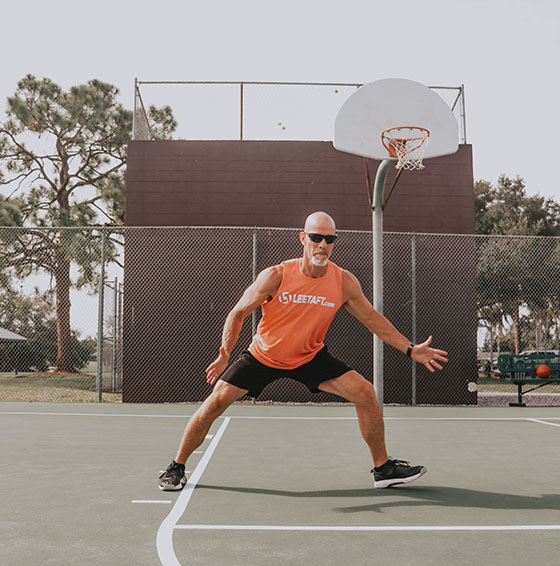
LATERAL RUN
The lateral run is what I like to call a combination of a run and a shuffle. The lower body uses an actual running gait pattern while the upper body stays squared as if shuffling.
The purpose of the lateral run is to have enough speed to stay in a great position. The shuffle isn’t quite fast enough once the opponent starts to get past the defender. The lateral run uses powerful and long steps to increase the rate of acceleration while moving laterally.
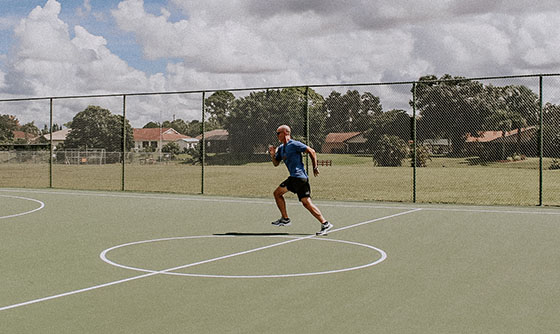
HIP TURN
The ability to quickly open the hips and retreat to attack new space is one of the most critical athletic skills a basketball player can possess. Skilled offensive players will get defenders to turn their hips and go the other way. Skilled defenders can use a Hip Turn to aggressively flip the hips and push off the ground to get back into a good defensive position.
Unfortunately, the old technique still taught is to pivot on one foot while swinging the other leg open. This technique is too slow due to the friction the pivot causes and the foot doesn’t attack the ground as it would using a Hip Turn.
The importance of the Hip Turn is it allows the athlete to quickly reposition their feet so they can push in any direction instantly. A pivot doesn’t allow this.
Another retreating skill that’s used often in basketball is the backpedal. This pattern is commonly performed during transition defense with a 180-degree turn.
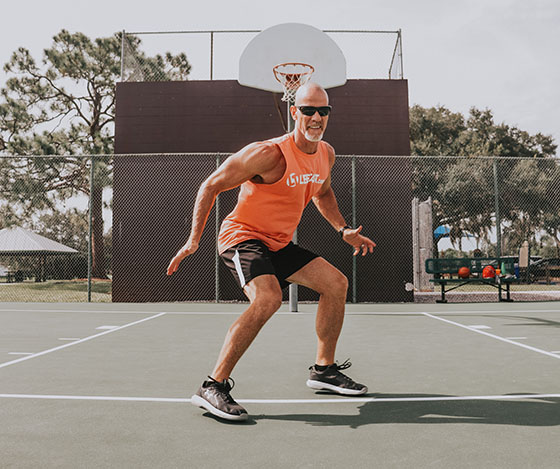
BACKPEDAL
I typically teach two forms of backpedals, the Compact and the Extended. Let's stick with discussing the extended for basketball and the defensive transition.
The extended backpedal is a traditional upright posture backpedal where the athlete uses longer strides to maintain a decent level of speed and, by staying tall, can see the floor better.
In basketball, we often see that a player will begin to sprint back on defense, move to half court, perform a 180-degree turn, and start to backpedal so they can recognize how the offense is setting up as they come up the floor.
To be safe and effective, I recommend players perform the extended backpedal with a slight lean forward (staying in front of the vertical axis) to maintain balance and not fall backward. This posture and position also help the player transition from the backpedal to attack the ball as it is pushed up the floor.
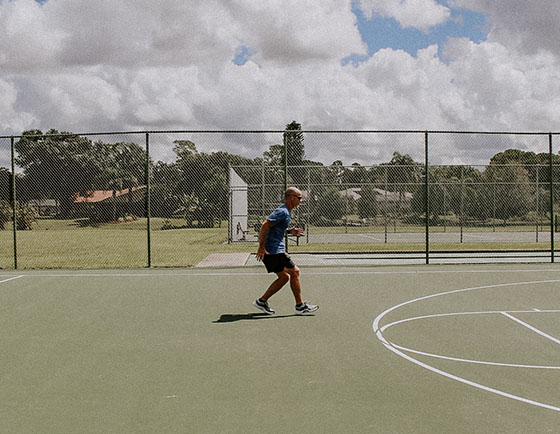
JUMPING
Jumping is widely the most talked about skill basketball players need to develop and control. The problem is that most players simply want to jump high and don’t think twice about how to land.
If the landing is neglected, we increase the risk of injury and reduce performance. The ability to land from a basic jumping pattern is the foundation of training for jumping. Adding the ability to land from various jumps will further protect the players from injury and increase performance.
The basics of teaching players to jump and land are how to use arms to aid in jumping upward, how to use the ankles and hips to support a proper landing, and where the knees should track to stay in a safe zone. Jump training should not be a high-volume endeavor. The sport requires lots of jumping and landing. Training for jumping should be low volume, high intensity, and added variation to challenge the athlete's body awareness.
In these two photos, you will notice two different loading patterns to begin the jump. One is very hip dominant (A), while the other is more quad dominant, as you can see this athlete's logo on the shirt (B). Neither is wrong, just different.
SUMMARY
Additional footwork patterns need to be trained in basketball, but these general patterns are what set up the ability to be efficient at the specific patterns. I strongly encourage coaches to spend time teaching linear acceleration, lateral shuffle, lateral run, Hip Turn, jumping, and backpedal.
The most apparent movement exclusions I didn’t mention are close out techniques, change of direction, and recovery footwork. These skills are essential, but so many athletes need the initial foundations to help them develop the fundamentals of movement. A great change of direction, close out, or recovery step is predicated on good postures and positions learned through the foundations.
Basketball is a sport of rapid movements followed by slower calculated movements to deceive the opponent. Regardless of the footwork skill being performed, the ability to be effective and efficient will dictate the success of the move.
Lee Taft

Lee Taft, known to most simply as “The Speed Guy”, is highly respected as one of the top athletic movement specialists in the world. In the last 30 years he has devoted the majority of his time training multi-directional speed to all ages and abilities. He has spent much of this time teaching his multi-directional speed methods to top performance coaches and fitness professionals all over the world. Lee has also dedicated countless hours mentoring up and coming sports performance trainers, many who have gone into the profession and made a big impact themselves. Learn how to become a Certified Basketball Speed Specialist and CLICK HERE
